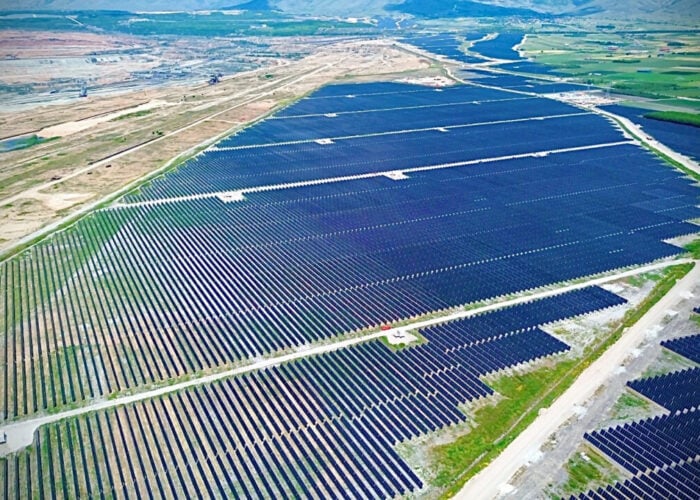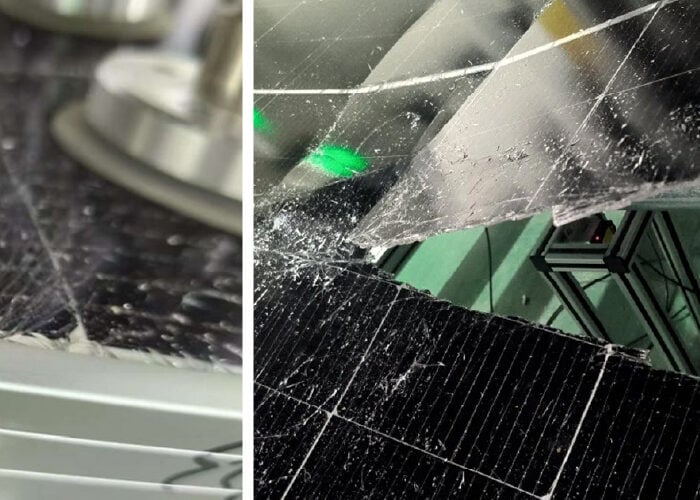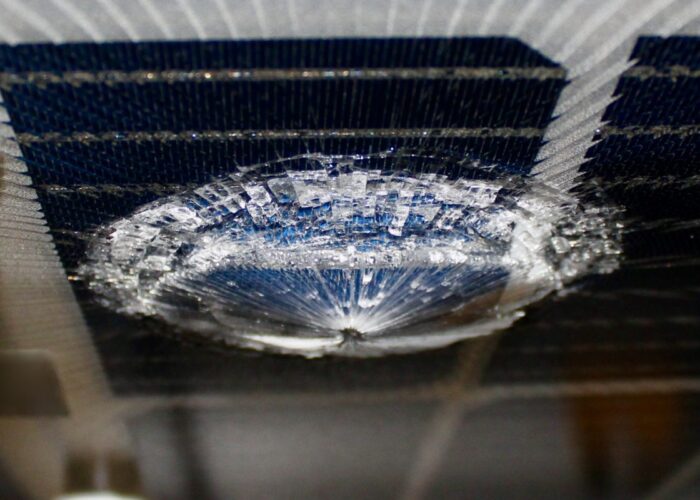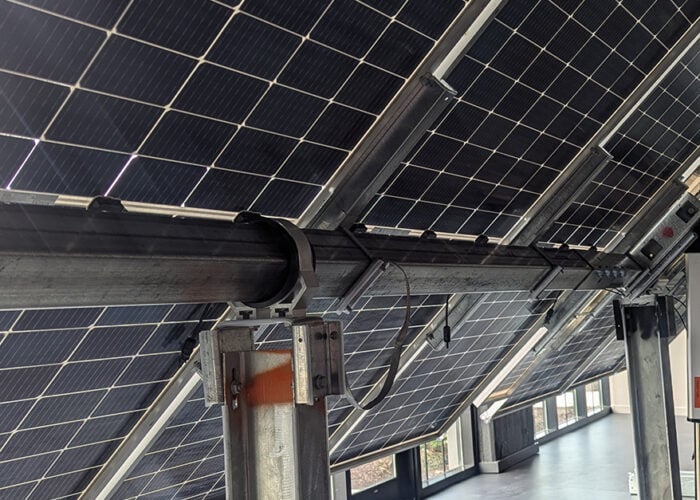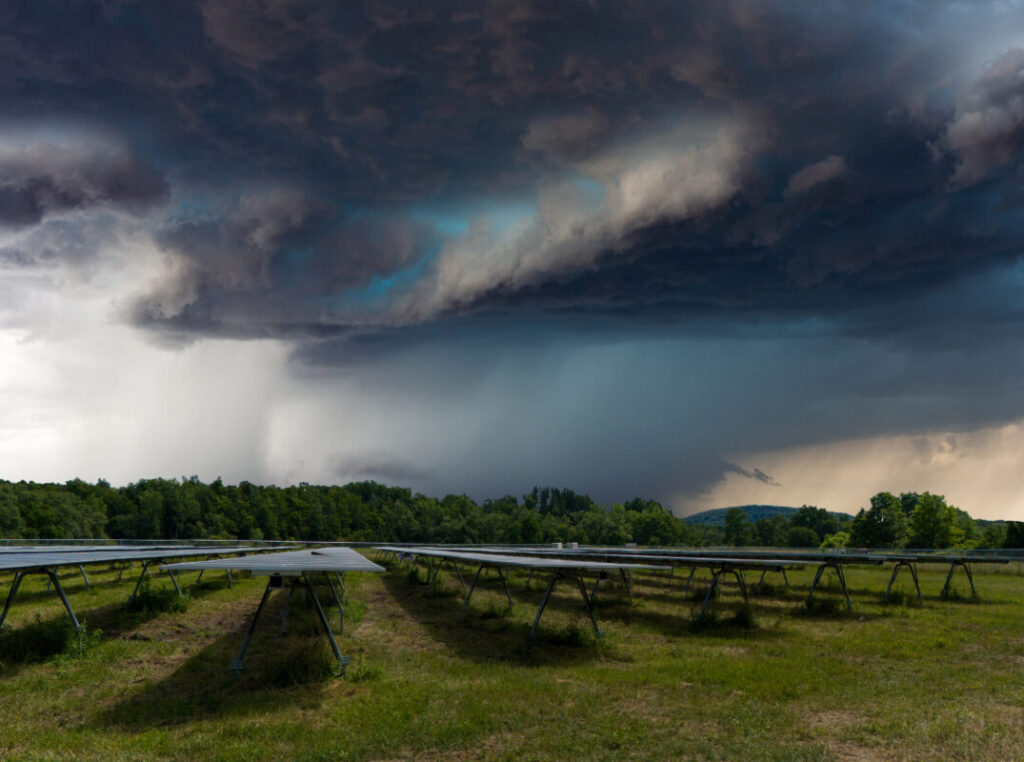
US racking provider Terrasmart has launched a hail stow feature for use on its TerraTrak single-axis trackers.
The feature consists of a cloud-based weather database, including both historical and forecast data, collected from US weather data provider AccuWeather, and compiled with its PeakYield tracker control and monitoring software.
Unlock unlimited access for 12 whole months of distinctive global analysis
Photovoltaics International is now included.
- Regular insight and analysis of the industry’s biggest developments
- In-depth interviews with the industry’s leading figures
- Unlimited digital access to the PV Tech Power journal catalogue
- Unlimited digital access to the Photovoltaics International journal catalogue
- Access to more than 1,000 technical papers
- Discounts on Solar Media’s portfolio of events, in-person and virtual
When a hailstorm is forecast, the trackers automatically move the modules into stow position, and can complete this work up to an hour before the storm hits the solar project. Terrasmart notes that these parameters can be customised “to meet owner requirements”.
The programme can be used to stow panels on both one-portrait (1P) and 2P trackers, with 1P trackers able to rotate panels by up to 50 degrees, and 2P trackers capable of rotating panels by up to 60 degrees.
“Our motto at Terrasmart is to stow early and stow often,” said Ashton Vandermark, Terrasmart software solutions lead. “We are adamant about automatically triggering hail protection to avoid instances where manual intervention has not occurred during storms. We are excited about this latest addition to PeakYield’s cloud-based functionality and machine-learning intelligence to protect assets.”
The launch follows a number of high-profile hail incidents in the US solar sector, including the fall of “golf ball-sized” hailstones onto the Fighting Jays solar project in March.
The incident prompted questions about the risks posed by extreme weather to solar projects, with the increasing size of solar projects exposing more panels to the risks posed by extreme weather, and solar companies to take action. In June, tracker manufacturer FTC Solar launched its own automated hail stow solution to tackle the risk of hail.
However, questions remain as to the best way to manage the perceived financial risk associated with hailstorms. Earlier this year, Jason Kaminsky of kWh Analytics told PV Tech that existing modelling tools used in the solar sector have underestimated financial losses due to physical damage, such as extreme weather events, by over 300%. As a result, updating weather modelling and financial forecasting tools could be an essential component of minimising weather damage at solar projects.

